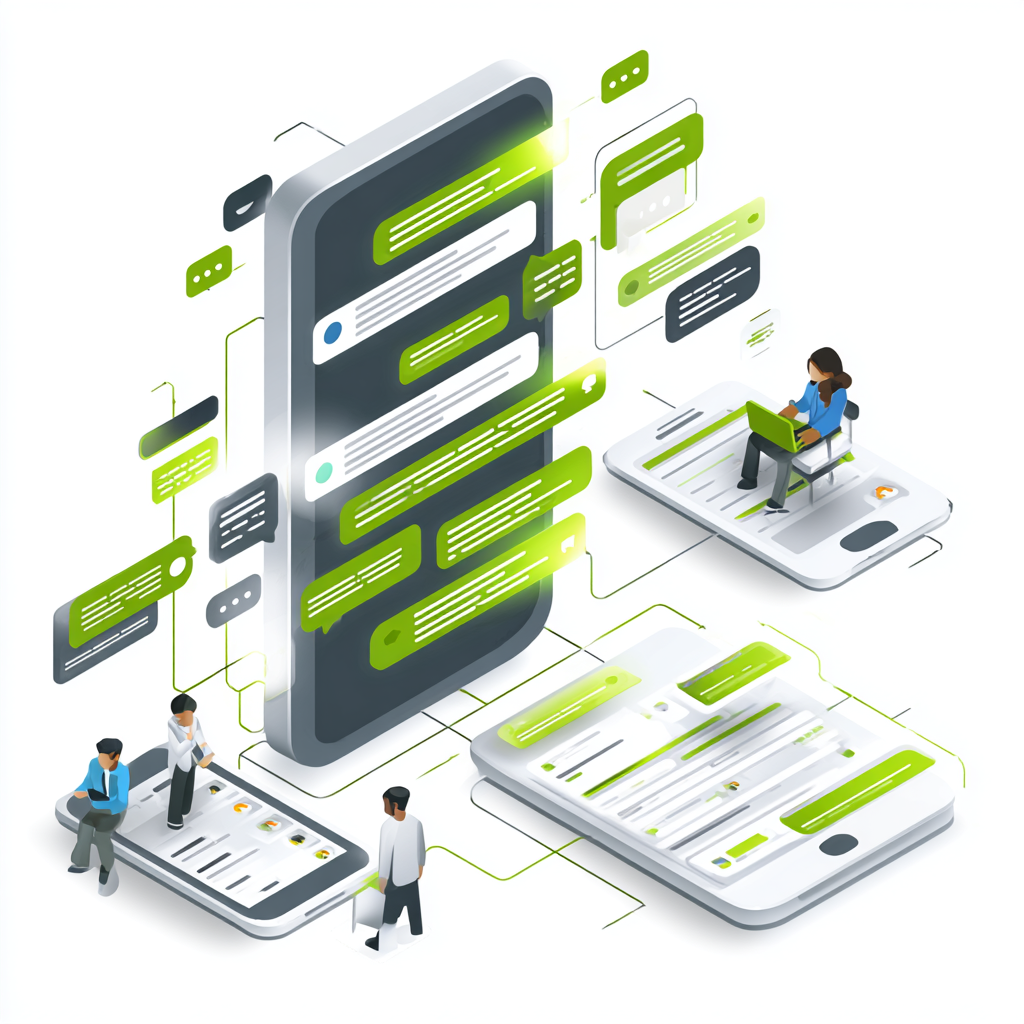SMS marketing stands out for its high open rates and quick engagement. SMS is a tool for businesses with a 98% open rate and an impressive average response rate of 45%. However, success depends on more than just sending messages; optimizing your bulk SMS campaigns is critical to maximizing engagement and minimizing opt-outs. This article looks into practical strategies for fine-tuning the timing and frequency of your bulk SMS campaigns.
Timing: The importance of timing in optimizing your bulk SMS campaigns
Timing plays a vital role in the growth of your SMS marketing campaigns. Sending messages at the appropriate time can enhance visibility and encourage action.
Identifying peak engagement times
Understanding when your audience is most likely to read and respond to messages is crucial for maximizing engagement. Analyze historical data to pinpoint peak activity periods for your target demographic. Consider factors such as:
- Demographics: Different age groups and professions may have varying peak times for checking their phones. For example, young adults might be more active in the evenings, while working professionals may check their messages during lunch breaks.
- Geography: Your audience’s location can also impact their availability. For instance, if you have customers in different time zones, you need to adjust your messaging times accordingly.
Industry trends
Different industries may have varying optimal times for sending messages. Here are a few examples to consider:
- Retail: Sending messages in the evening when customers are likely to browse deals after work can yield higher engagement.
- Service notifications: Morning messages might be ideal for appointment reminders or service updates, ensuring customers have the information they need before starting their day.
Tools and techniques
Utilizing analytics tools or customer surveys can gather insights into your audience’s preferences and help identify optimal messaging times. Additionally, consider the following methods to optimize your timing:
- Analytics platforms: Use platforms like Google Analytics or dedicated SMS marketing tools to analyze the performance of your campaigns.
- Experimentation: Feel free to experiment with sending messages at different times and track the resulting engagement metrics to find what works best for your audience.
Frequency: Finding the right frequency
Finding the right balance in frequency is crucial. Overloading customers with too many messages can lead to frustration and unsubscribes, while sending too few may cause them to forget about your brand.
General guidelines:
Aim for at most 2-3 messages per week. However, the frequency varies depending on your audience and the nature of the content. Here is a guideline to help you find the right frequency:
- Promotional messages: If you send promotional offers, consider sending 1-2 messages per week to keep your audience interested without bombarding them.
- Transactional messages: It is good to send confirmations or reminders as needed, as customers often expect and welcome these communications.
Engagement vs. fatigue
Monitoring key engagement metrics, such as open and click-through rates, is essential to gauge the effectiveness of your frequency strategy. For example, if you send out promotional messages weekly but notice a drop in open rates, try alternating the types of content.
Best practices for timing and frequency: Proven techniques for optimizing your bulk SMS campaigns
Implementing positive practices can significantly enhance the effectiveness of your bulk SMS marketing. Here are some strategies to consider:
1. Segmentation
Divide your audience based on behavior, preferences, and demographics. This allows for tailored messaging that resonates more effectively with specific groups. Segmentation can be based on factors such as:
- Purchase history: Target customers based on their previous purchases to send them relevant offers or updates. For instance, if customers frequently buy fitness gear, send them promotional messages about new arrivals in that category.
- Engagement levels: Identify your most engaged users and send them exclusive offers to reward their loyalty while nurturing less active subscribers with re-engagement campaigns.
2. Personalization
Personalize your messages using the recipient’s name or provide relevant offers based on previous interactions. This approach fosters a stronger connection and increases the likelihood of engagement. Here are some personalization strategies:
- Dynamic fields: Use dynamic fields to include the recipient’s name, location, or last purchase in the message, making it feel more tailored and relevant.
- Behavior-based offers: Send tailored offers based on past interactions or preferences. For example, if a customer frequently buys a particular product, send them a discount on similar items.
3. A/B testing
Conduct A/B tests on sending times and message frequency to identify the most effective strategies for your audience. Testing different content variations can also help refine your approach. Consider the following:
- Test different times: Experiment with sending the same message to different audience segments at various times. Analyze which time yields the best results in terms of engagement and conversion.
- Content variations: Vary the content of your messages to see what resonates most with your audience. Test different formats (images vs. text), tones (formal vs. casual), or lengths to identify which combination generates the highest response rates.
4. Opt-in preferences
Allowing your audience to choose how often they receive messages helps balance engagement and frequency. You let customers control their interactions by offering weekly, bi-weekly, or monthly updates, increasing satisfaction and retention. When users subscribe, let them choose how often they want to hear from you and the content they prefer.
This approach respects their preferences and reduces the risk of opt-outs. For example, customers may opt for weekly exclusive deals instead of regular updates, ensuring they receive only the content that interests them.
5. Message scheduling
Implementing a consistent message schedule helps manage expectations and builds a routine for your audience so they know when to expect your messages. Consistent timing fosters familiarity and can even help boost open rates over time. Here are some strategies for scheduling:
- Set expectations: Make it clear when subscribers can expect to hear from you from the start. For example, stating, “Get weekly deals every Friday” gives recipients a sense of predictability and avoids surprises.
- Seasonal adjustments: During holidays or busy shopping seasons, adjust your schedule to send more frequent messages. However, monitor engagement rates and opt-outs closely to ensure you are manageable for your audience.
Analyzing your campaigns: Data-driven adjustments for better timing and frequency.
Using data-driven insights, you can make informed adjustments to optimize timing and frequency for maximum impact.
1. Measuring success
Tracking key performance metrics is essential for understanding the impact of your campaigns. Here are some critical metrics to monitor:
- Delivery rates: Ensure that your messages are successfully reaching your audience. High bounce rates may indicate issues with the quality of your contact list, necessitating regular list hygiene.
- Open rates: Monitor the number of recipients who open your messages. This metric indicates the effectiveness of your timing and messaging strategy. A decline in open rates may prompt a reassessment of your approach.
- Click-through rates (CTR): Evaluate how many recipients click on links within your messages, reflecting their engagement level and interest. Higher CTRs suggest that your content is resonating with your audience.
2. Key metrics to track
Monitor delivery, open, and conversion rates to evaluate the success of your campaigns. Consider tracking:
- Opt-out rates: Monitor the number of subscribers who opt out of your messages. A spike in opt-outs may indicate issues with your frequency or content, signaling a need for adjustment.
- Engagement metrics: Track how often recipients engage with your messages over time to identify trends and patterns.
3. Data-driven decisions
Analyze response data to refine your timing and frequency strategies. If certain messages consistently perform well at specific times, consider adjusting your campaign schedule to align with these insights.
- Timing adjustments: If you notice that messages sent on Thursdays have higher engagement, prioritize that day for essential announcements or promotions to capitalize on peak activity.
- Frequency adjustments: If you observe higher engagement with less frequent messages, reduce your overall message volume to maintain interest and prevent subscriber fatigue.
4. Feedback loops
Create channels for recipient feedback, such as surveys or reply options, to understand their preferences better. This information can help you adjust your strategies for future campaigns. Some methods include:
- Surveys: Send short surveys asking customers about their message frequency and content preferences. Keep it straightforward to encourage responses and gain actionable insights.
- Reply options: Allow recipients to respond to your messages with feedback or preferences, providing you with direct insights into their desires. Engaging your audience in this manner fosters a sense of community and loyalty.
Transforming your SMS marketing strategy for success
Optimizing the timing and frequency of your bulk SMS campaigns is critical for achieving your marketing goals. You can enhance your SMS marketing strategy and foster deeper connections with your audience by identifying peak engagement times, managing message frequency thoughtfully, implementing best practices, and continuously analyzing your results.
As you implement these techniques, keep an open mind and be prepared to adjust based on your audience’s responses. By continuously refining your approach, you can transform SMS marketing into a powerful tool for connecting with your customers effectively. Start implementing these strategies in your bulk SMS campaigns today, monitor your results, and be open to adjusting based on your audience’s responses.





